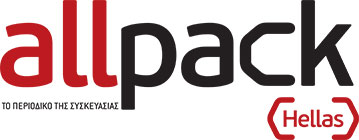PE: The mood among converters is very subdued, to say the least. With all PE types, concern about the immediate future of sales markets is mounting. March began slowly and increases with new contracts were fairly moderate before producers closed their order books in the middle of the month. This created a considerable stir in the market, and buyers were left with no alternative but to buy their material from then on at higher prices. With many types – at least on paper – European production is able to meet the demand. Hence, prices ought to decline. The fact that they are not falling, but on the contrary are rising exorbitantly, is due to the uncertainty in the market. Many converters are ordering more than they need and are thus driving demand “artificially” high. The uncertainty, as a consequence of Russia’s war in Ukraine, is likely to continue in April. Some converters are planning to extend their Easter break because demand is low, and they hope the price situation will ease as a result. Many of them are even considering shutting down entire production lines because they are, in some cases, not economically worthwhile anymore.
PP: In March 2022, the Ukraine crisis had the Western European propylene market fully in its grip. To get the ball rolling, the C3 reference price added EUR 95/t, which sent PP producers scrambling to pass on their higher cost. Then, against the backdrop of sanctions against Russia and Moscow’s pushback against them, energy prices exploded. With their cost calculation torpedoed, many PP producers abruptly closed their order books and introduced hefty energy surcharges for subsequent orders. These did not hold up long, however. As energy prices began to sink again, the supply side had to back away from the exorbitant surcharges. The upshot of all of this was a wide range of price increases spread over the month. But those who applauded too soon will soon have to face the music again. The thaw in March will give way to an avalanche of higher prices in April, as the C3 contract quotation gained a resounding EUR 225/t in the first month of the second quarter. Amidst the raw uncertainty of future gas supply parameters, producers will undoubtedly launch a new round of energy surcharges. With this, PP prices will soar to new, dizzying heights. PP buyers will not be caught unaware, however. Already in March, many converters began building up inventories. In the month’s second half, demand began to point upward again after a period of full inventories and weak end-markets. The buoyant price upswing expected in April will choke demand again, as many buyers will cover only their immediate needs. The outlook for the compounding segment is similar. Demand will remain soft, but because compounders already adapted their output in March, they will be in a relatively good position to push through price increases.
PVC: Twenty-two months – that is the average gestation period for a pregnant elephant. It has also been that long since prices for PVC compounds started their rise, and the trend continues. The high-price period for the base material has also lasted just as long if one includes two brief rollovers. On the price front, it’s one record high after another. In March 2022, producers and converters initially agreed on an increase of EUR 50/t, which generally corresponded to the EUR 95/t increase in the cost of ethylene feedstock. Then something happened around the middle of the month that had never happened before: some producers called for a hefty, triple-digit increase even for orders that had already been approved. They justified this with the cost explosion for energy due to the Ukraine war and the corresponding sanctions on Russia. This created problems with converters, who rejected the move. They were strengthened by an improvement in the availability of US and Asian imports. Since energy costs fell again shortly afterwards, producers were able to revoke the planned cost increase, and also save face. However, energy costs are likely to be an issue again in April. In connection with the sharp rise in the ethylene reference (up 230 EUR/t), strong price increases are to be expected at the start of Q2. For compounds, the size of the latest price increases was essentially dependent on the cost rises for base material and additives. Next month, demand is nevertheless likely to return to normal because, after the enormous increases that will come in April on top of the previous record prices, many converters will work from stock as far as they can and order only what they absolutely need. They are becoming increasingly concerned about constantly rising inflation, which is also unsettling converters more and more. After all, when purchasing power declines, consumers may hit the brakes and ask themselves if fixing the roof is really necessary and whether the investment in new flooring could be postponed once again.
Styrenics: Not only is the situation on the market still difficult, the problems are actually increasing massively. Processors that in February hoped the general situation would slowly be returning to normal after coronavirus measures lifted were disappointed: the war in Ukraine and the associated trade distortions are once again turning everything upside down.
Prices witnessed a first surge at the start of March when the SM reference contract increased EUR 93/t. The premiums for PS and EPS were initially in line with the cost change. The changes for ABS, on the other hand – and to some extent also for PS – were quite heterogeneous right from the start as a result of favourably priced imports from Asia and individual price corrections. Additional confusion was caused when a PS and ABS supplier temporarily demanded significant surcharges for new orders after skyrocketing energy prices threw cost calculations out of kilter. Regardless, PS and ABS prices again climbed close to their previous highs, and EPS even rose to a new record high. With so many different developments, the price change reported by PIE can only represent an average. But things can always get worse. An even more massive cost surge is anticipated for April: the styrene reference soared up by EUR 360/t at the start of Q2 – certainly in part because of high energy costs and concerns about European gas supplies. Butadiene increased EUR 200/t and the ABS component ACN rose EUR 400.50/t. It cannot be ruled out that individual suppliers will also want to rehash the issue of energy costs, which would lead to new record prices for all styrenics. Added to this are logistics bottlenecks such as insufficient truck capacities or cost increases of up to 20%. Plastics producers are considering production cutbacks so they won’t have to sell expensively produced material at a loss later on. This is likely to lead to bottlenecks. The future of Europe’s gas supply – essential for operating industrial plants – is in question because of the trade war with Russia, and the effects of coronavirus-related lockdowns at Chinese ports cannot be foreseen at this point. Bottom line: processors are having trouble keeping their heads above water. Even if they are able to incorporate the foreseeable massive cost increases into their own sales prices, a certain delay is usually involved, annihilating any potential margins.
PET: As expected, the European PET market in March was subjected to even more turbulence due to the war in Ukraine. Whereas many buyers remained hesitant in the first few days of the month because of the possibility of weaker demand due to the war, this quickly changed. The surge in end-market material requirements sparked a run on the evidently ever shorter supply quantities. As a consequence of the surging feedstock and energy costs, the price increases very quickly reached high triple-digit levels. At the end of the month, reports emerged of transactions with increases of up to EUR 200/t compared with the previous month. There is no sign of the tension easing in April. On the contrary, further triple-digit hikes are to be feared. The spring season will presumably trigger significant momentum, but the supply situation is likely to become even worse. Producers’ demands are already correspondingly high, and buyers have virtually no choice. The only option would be to radically stop ordering and halt production – at least in part. This is, in fact, a distinct possibility in view of the unwillingness or inability of some end-customers to accept the high costs.
For more than 35 years, PIE has been an invaluable source of information for European plastics industry decision makers – a quick, yet in-depth look at the development of plastics markets and polymer prices. Available online 24/7 and as a printed newsletter twice a month. To read the entire report, go to www.pieweb.com and sign up for a 48-hour free trial!
























